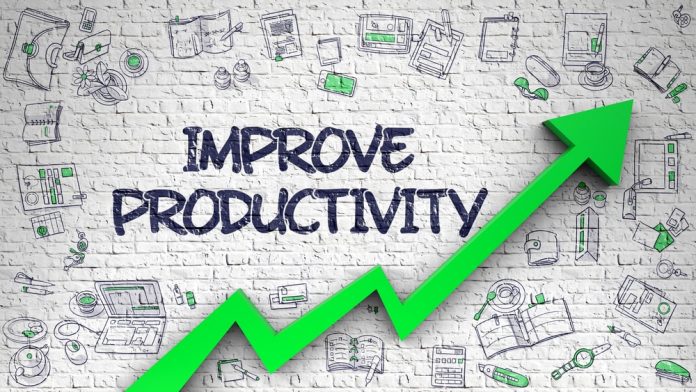Organizations are starting to see that measuring and improving productivity plays an important role in their overall success.
By Dave Nevogt
In a 2018 report on the State of Productivity, 71.5% of survey respondents from international organizations said they measure productivity within their business.
In this article, we’ll offer suggestions on how to accurately track productivity in order to reach your goals. We’ll also be discussing how employee engagement relates to productivity, and how it can benefit your company.
Prioritizing productivity in organizations
According to the report, the biggest productivity challenges that organizations face are:
- Establishing a productivity-focused mindset
- Quality of work
- Team communication
35.4% of respondents experienced difficulties in getting into a productive mindset, which can lead to workplace inefficiency.
The main problem that comes with this is, as Parkinson’s Law puts it, is: “Work expands to fill the time available for its completion.” Simply stated, if employees are given a two-hour task for the day, it becomes an eight-hour task psychologically.
When it comes to increasing productivity in teams and businesses, it’s important to identify how “productivity” is defined, and how the team can live up to this standard.
Measuring productivity
Most of the survey respondents reported their organizations to be moderately productive. There’s not just one way to measure productivity. Here are some of the common methods organizations use to gauge how efficiently they are performing:
- Results vs. goals: Set goals, then compare the results. Being able to meet, or at least come close to expectations, may indicate an acceptable level of productivity.
- Time tracking: Time tracking monitors how long you have worked on a particular task. Some apps come with activity monitoring, so you can have a clearer view of how your employees work over the course of the day.
- Turnover rate: While not a direct indicator of productivity, a high turnover rate harms productivity. Hppy reports, “High employee turnover means having many inexperienced employees, which will eventually lead to lower employee productivity.”
Knowing where your organization stands makes it easier to identify weaknesses and create productivity plans that are well-suited to your situation.
Retaining good employees
Open communication is instrumental in keeping employee engagement high. This leads to better performance and increased productivity.
Instead of standard performance reviews, try one-on-one meetings where the focus is on the employees themselves instead of just their performance at work. Facebook CEO Mark Zuckerberg makes time for one-on-one sessions with team members bi-weekly.
Optimizing your team for high productivity
Productivity is often associated with growth. The sooner that smaller tasks are completed, the more time there is for higher impact work. In other words, productivity depends on the capabilities of the employees themselves.
Hiring top-tier professionals can lead to better chances of success. Here’s how to find top talent.
Identifying high-performing employees
There is no single “best” employee, but you can find ones that fit the role and environment you’re creating. Psychology Today lists competence, conscientiousness, and common sense as three core characteristics of great employees. These are good starting points when choosing from candidates, in addition to:
- Skill. Are they capable enough to handle the job responsibilities? Can they learn the required knowledge in a reasonable amount of time?
- Work ethic. What’s their approach to work? How do they manage time?
- Team chemistry. Do they have a positive impact on the team? According to TINYpulse, an employee who is unable to collaborate well can have negative effects on the team, such as loss of creativity.
Remote work: Better hiring opportunities and employee motivation
Going remote boosts your chances of finding an ideal candidate because you’re not limited to one geographic region.
But what’s in it for employees? Freedom. Remote work allows employees to set their own work-life balance. Per The Balance Careers, this can help employees work 21% harder.
Use digital tools to make communication easier
Communication is necessary for success. However, it may be more complicated in remote teams.
To make things easier, there are digital tools to help ensure that managers and employees are on the same page. A great platform for collecting employee feedback is Culture Amp, which helps managers understand team members and keep them engaged.
What this means for business owners
Business owners should understand that growth comes from every person in an organization. A CustomerThink article cites employee engagement as a contributor to higher productivity and lower turnover rates.
It’s also worth considering that remote jobs are a steadily rising trend. Statistics show that remote employees are generally more motivated and productive. Becoming a remote organization could be the change your business needs to achieve high productivity and consistent growth.
Whatever the case may be, always pay close attention to your team. This will allow you to correctly identify possible areas for improvement, and make the right decisions your business.
Dave Nevogt is the cofounder and current CEO of Hubstaff, a time tracking software with employee productivity monitoring, payroll and many other powerful capabilities. @Hubstaff
Productivity stock photo by Tashatuvango/Shutterstock







